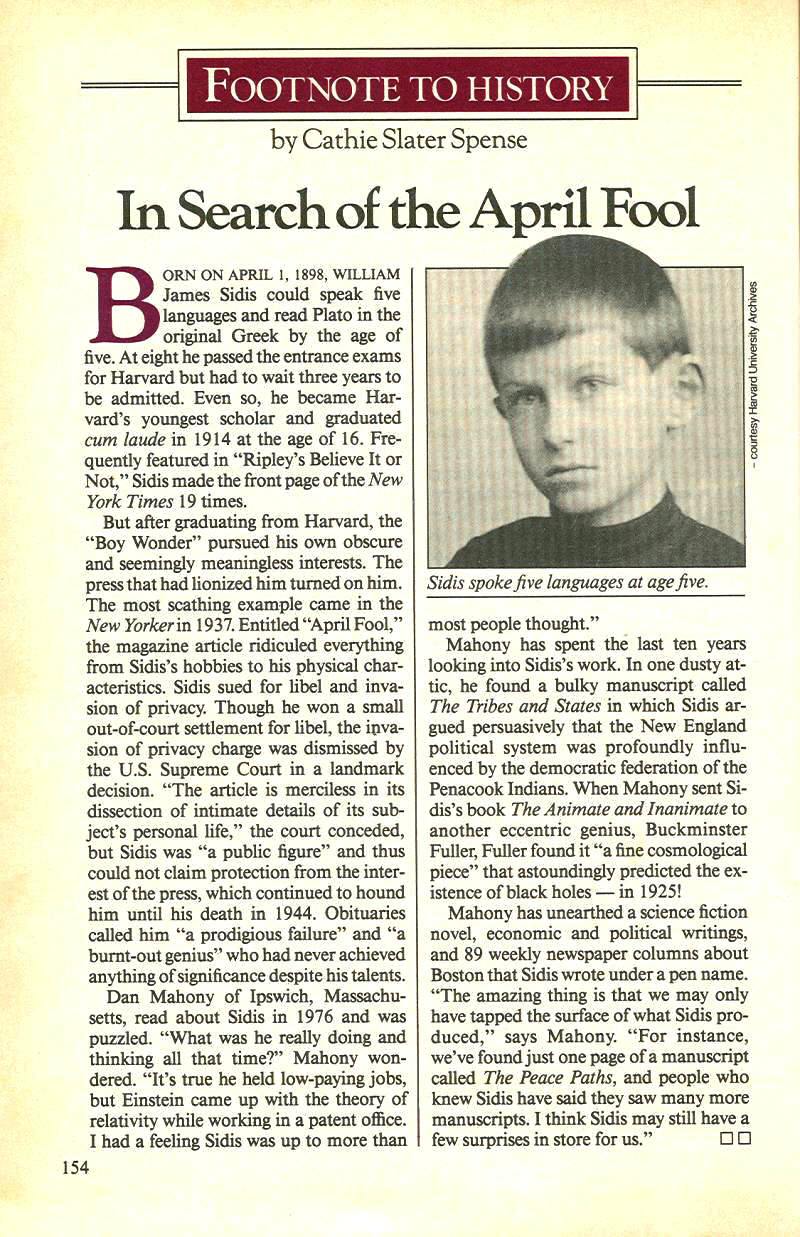| Home
.pdf
Born on April 1, 1898, William James Sidis could speak five languages and read Plato in the original Greek by the age of five. At eight he passed the entrance exams to Harvard but had to wait three years to be admitted. Even so, he became Harvard's youngest scholar and graduated cum laude in 1914 at the age of 16. Frequently featured in "Ripley's Believe It or Not," Sidis made the front page of the New York Times 19 times. But after graduating from Harvard, the "Boy Wonder" pursued his own obscure and seemingly meaningless interests. The press that had lionized him turned on him. The most scathing example came in the New Yorker in 1937. Entitled "April Fool," the magazine article ridiculed everything from Sidis's hobbies to his physical appearance. Sidis sued for libel and invasion of privacy. Though he won a small out-of-court settlement for libel, the invasion of privacy charge was dismissed by the U.S. Supreme Court in a landmark decision. "The article is merciless in its dissection of intimate details of its subject's life," the Court conceded, but Sidis was a "public figure" and thus could not claim protection from the interests of the press, which continued to hound him until his death in 1944. Obituaries called him a "prodigious failure" and a "burnt- out genius" who had never achieved anything of significance despite his talents. Dan Mahony of Ipswich Massachusetts, read about Sidis in 1976 and was puzzled. "What was he really doing and thinking all that time?" Mahony wondered." It's true he held low-paying jobs, but Einstein came up with the theory of relativity while working in a patent office. I had a feeling Sidis was up to more than most people thought." Mahony has spent the last ten years looking into Sidis's work. In one dusty attic he found a bulky manuscript called The Tribes and the States in which Sidis argued persuasively that the New England political system was profoundly influenced by the democratic federation of the Penacook Indians. When Mahony sent Sidis's book The Animate and the Inanimate to another eccentric genius, Buckminster Fuller, Fuller found it "a fine cosmological piece" that astoundingly predicted the existence of black holes―in 1925! Mahony has unearthed a science fiction novel, economic and political writings, and 89 weekly newspaper columns about Boston written under a pen name. "The amazing thing is that we may only have tapped the surface of what Sidis produced," says Mahony. For instance, we've found just one page of a manuscript called The Peace Paths, and people who knew Sidis said they saw many more manuscripts. I think Sidis may have a few more surprises in store for us."
[Note: This article is included in the novel Lila by Robert M. Pirsig.]
|
